Introduction
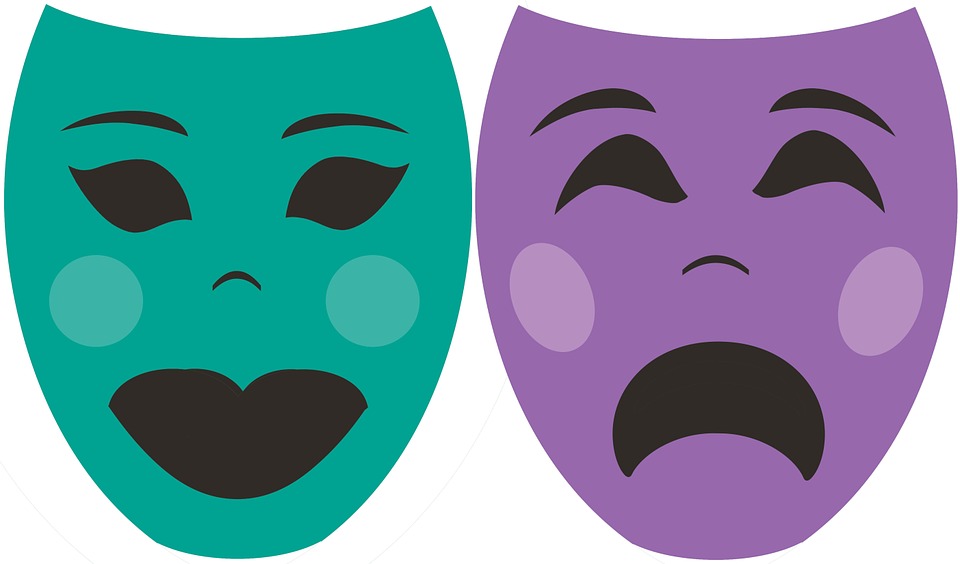 In this lesson, you'll focus on drama, a piece of writing that tells a story and is performed on the stage.
In this lesson, you'll focus on drama, a piece of writing that tells a story and is performed on the stage.
Many of the terms used in drama have multiple meanings. The word play is an obvious example. Act describes general behavior, but in this lesson, an act is a subdivision of a play. Scene can refer to a lovely landscape; however, we’ll refer to scene as a part of an act in a play. Part has multiple meanings as well. You can part your hair or part company. A play with a lot of characters has many parts. Drama is a genre of literature that includes a script. This lesson spotlights two parts of that script: dialogue and stage directions. Dialogue is what actors say, while stage directions are what they do.
Images used in this section:
Source: actor-mask-theater-performance-666499, kellierae, Pixabay
From Aristotle to Annie
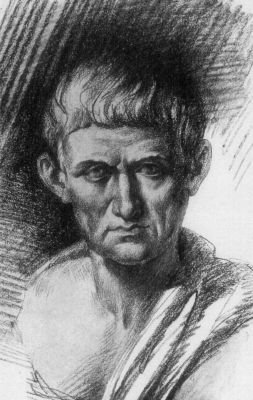
One of the best ways to understand something as complex as drama is to break it up into its parts. Aristotle, a Greek philosopher, analyzed drama way back in the 4th century B.C. In a work called Poetics, he divided tragedy, a type of drama, into six elements. Aristotle's elements can also be applied to comedy. The comedy and Broadway musical Annie provides examples of each element.
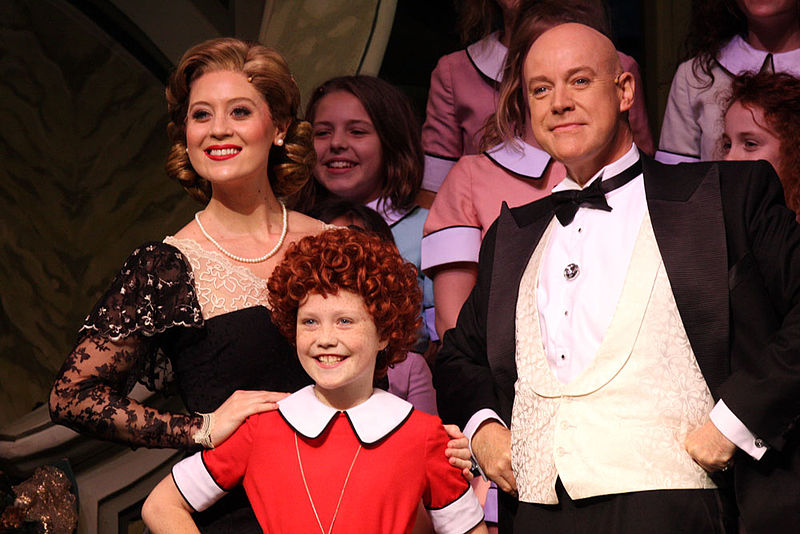
Spectacle—the visual elements of a play: sets, costumes, and special effects
The orphanage, Daddy Warbucks’s mansion, and Annie's curly red wig
If you've studied another genre of literature, the short story, you'll recognize some of Aristotle's elements. Even if you have not, you'll be able to figure out which four elements are shared by both genres and which two are unique to drama.
Images used in this section:
Source: Aristotle, Gutenberg.org
Source: Annie The Musical (6626173869).jpg, Eva Rinaldi, Wikimedia Commons
What Is a Drama Without Words?

While musicals like Annie have uplifting songs and delightful spectacle, drama is less about engaging the eye and more about engaging the ear. Drama is primarily a medium of words. Because plays are performed live, there are no special effects or animation. Robert Anderson writes, "When we go to see a play, it's the movement of the words rather than the movement of the scenery that delights us."

Dialogue, or conversation between characters, does most of the heavy lifting in drama. Occasionally, playwrights write monologues, in which one character gives a speech, but that is the exception. Most of the words in a drama take the form of dialogue. In a play, the audience is, in a sense, eavesdropping on these scripted and often revealing conversations.
Plot
The audience depends on the dialogue to follow the plot unfolding on stage. Playwrights are very intentional with each line of script so that the audience is aware of what is going on. In the opening scene of The Miracle Worker by William Gibson, a mother named Kate shines a lamp in the eyes of her ill daughter, Helen, lying in a crib. Kate screams and Keller, her husband, runs to the nursery. The audience depends on the dialogue between the two characters to know what is wrong with this baby.
Keller: Katie? What’s wrong?
Kate: Look. (She makes a pass with her hand in the crib, at the baby’s eyes.)
Keller: What, Katie? She’s well, she needs only time to—
Kate: She can’t see. Look at her eyes. (She takes the lamp from him, moves it before the child’s face.) She can’t see!
Kate: Or hear. When I screamed she didn’t blink. Not an eyelash—
Keller: Helen. Helen!
Kate: She can’t hear you!
In her parents' heartbreaking conversation, the audience discovers that Helen Keller is blind and deaf. Helen's disabilities are essential to the plot of The Miracle Worker. Notice also that some of the words in Gibson's script are in parentheses. These words are not spoken aloud by the actors; instead, these are stage directions that tell the actors what to do. You will focus on stage directions in another section of this lesson.
Characterization
Another important purpose of dialogue is to reveal something about the characters on stage. Whether based on historical figures or imagined by the playwright, characters must seem real to the audience. Characters seem believable when their dialogue is modeled on real-life conversations. We gain insight into their personalities, establish connections with them, and become invested in what happens to them because of what they say. From the beginning of William Gibson's play, we care about what happens to Helen Keller.
Now, examine a few lines of dialogue from the play Our Town by Thornton Wilder. See how much you can learn about the two main characters based on what they say.
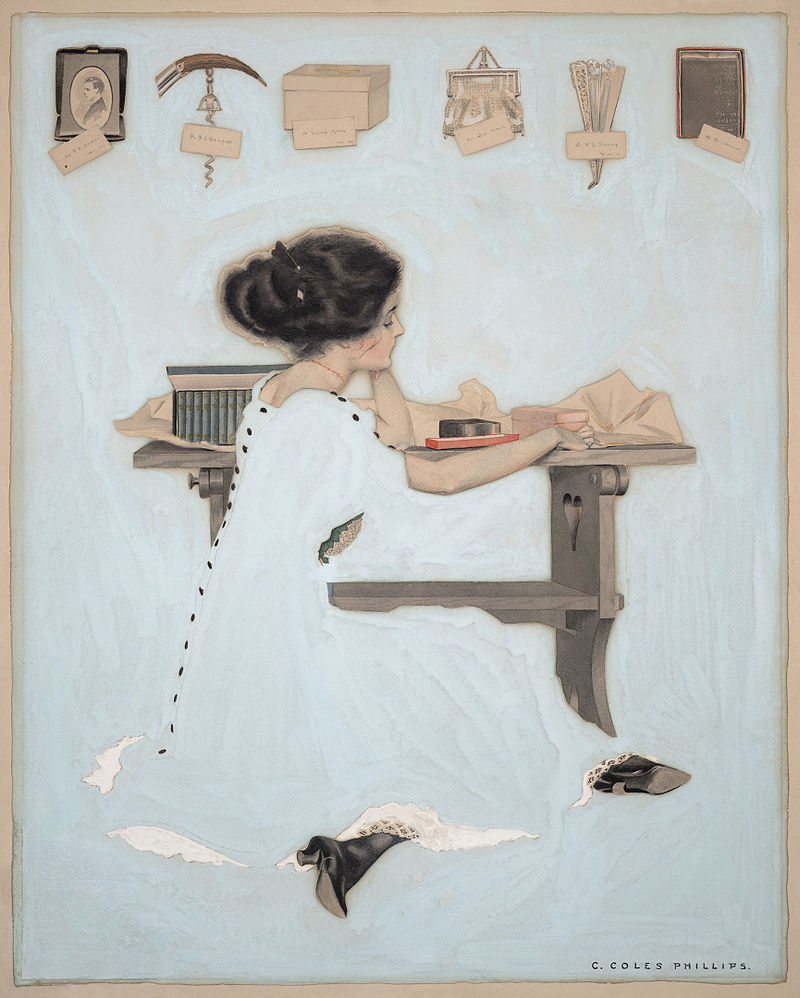
George: Hello, Emily.
Emily: H'lo.
George: You made a fine speech in class.
Emily: Well . . . I was really ready to make a speech about the Monroe Doctrine, but at the last minute Miss Corcoran made me talk about the Louisiana Purchase instead. I worked an awful long time on both of them.
George: Gee, it's funny, Emily. From my window up there I can just see your head nights when you're doing your homework over in your room.
Emily: Why, can you?
George: You certainly do stick to it, Emily. I don't see how you can sit still that long. I guess you like school.
Emily: Well, I always feel it's something you have to go through.
George: Yeah.
Emily: I don't mind it really. It passes the time.
George: Yeah.—Emily, what do you think? We might work out a kinda telegraph from your window to mine; and once in a while you could give me a kinda hint or two about one of those algebra problems. I don't mean the answers, Emily, of course not . . . just some little hint. . . .
Emily: Oh, I think hints are allowed.—So—ah—if you get stuck, George, you whistle to me; and I'll give you some hints.
George: Emily, you're just naturally bright, I guess.
Emily: I figure that it's just the way a person's born.
George: Yeah. But, you see, I want to be a farmer, and my Uncle Luke says whenever I'm ready I can come over and work on his farm and if I'm any good I can just gradually have it.
Emily: You mean the house and everything?
George: Yeah. Well, thanks . . . I better be getting out to the baseball field. Thanks for the talk, Emily.
You have read a small part of the conversation in the script of Thornton Wilder's play Our Town. Like any conversation you overhear, you need to fill in some of the pieces based on clues. This "filling in" is a kind of thinking called inferring. For instance, you can infer that George and Emily are next-door neighbors because George can see Emily from his bedroom window. You can also infer that they are classmates because they're discussing something that happened in class. What else can you infer about these two characters?
Review the two lists of adjectives below. Based on what you can infer from the dialogue, decide which set of adjectives describes Emily and which set describes George. Click on the appropriate character to confirm your answer.
- athletic, complimentary, purposeful
- studious, focused, serious, helpful
Images used in this section:
Source: Studearring.jpg, Earpiercing~commonswiki, Wikimedia Commons
Source: Conversation-dialogue-interview-1262311, josemiguels, Pixabay.com
Source: Coles Phillips2 Life.jpg, Durova, Wikimedia Commons
Source: Our Town, Ralph Homan, Flickr
Monologue and Dialogue
Playwrights can also use dialogue to communicate the theme of a play. In Our Town, Emily and George finish school and then get married, but Emily dies at a young age. Later in the drama, she returns as a dead soul and asks, "Do any human beings ever realize life while they live it—every, every minute?" When a character speaks from the grave, her message must be important.
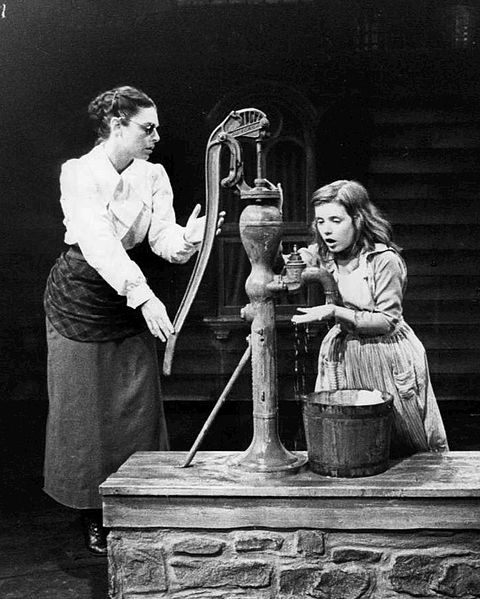
In The Miracle Worker, playwright William Gibson also uses a character to express the theme. Gibson's drama is about another famous Annie, this one a historical figure, the accomplished teacher Annie Sullivan. Annie's student was Helen Keller, the baby who is deaf and blind in the scene you read in the last section.
Annie Sullivan enters the scene some years later when she is hired as a governess by the Kellers to teach Helen how to communicate. Once Annie has taught Helen how to behave and even how to fold her napkin after a meal, her parents are satisfied with her progress and want to dismiss Annie. However, Annie is not satisfied because Helen still has no real understanding of language. Annie had been drilling her on American Sign Language, and she had not yet seen the breakthrough she knew her student needed to lead a full, productive life. Read Annie's convincing monologue about the importance of words.
Cleanliness is next to nothing, she has to learn that everything has its name! That words can be her eyes, to everything in the world outside of her, and inside too, what is she without words? With them she can think, have ideas, be reached, there’s not a thought or fact in the world that can’t be hers. You publish a newspaper, Captain Keller, do I have to tell you what words are? And she has them already, eighteen nouns and three verbs, they’re in her fingers now, I need only time to push one of them into her mind! One, and everything under the sun will follow. Don’t you see what she’s learned here is only clearing the way for that? I can’t risk her unlearning it, give me more time alone with her, another week to--
While Annie’s speech is a practical plea to Helen's parents to continue her work, it also conveys a clear theme. Language is critical to a meaningful life. Annie Sullivan is teaching the Kellers and the audience simultaneously, or at the same time. Persuasive as Annie is, the play would not succeed unless both the main characters—Annie and Helen—have a true dialogue. In this famous scene from the movie version of The Miracle Worker, you will witness Annie's miraculous single-word breakthrough.
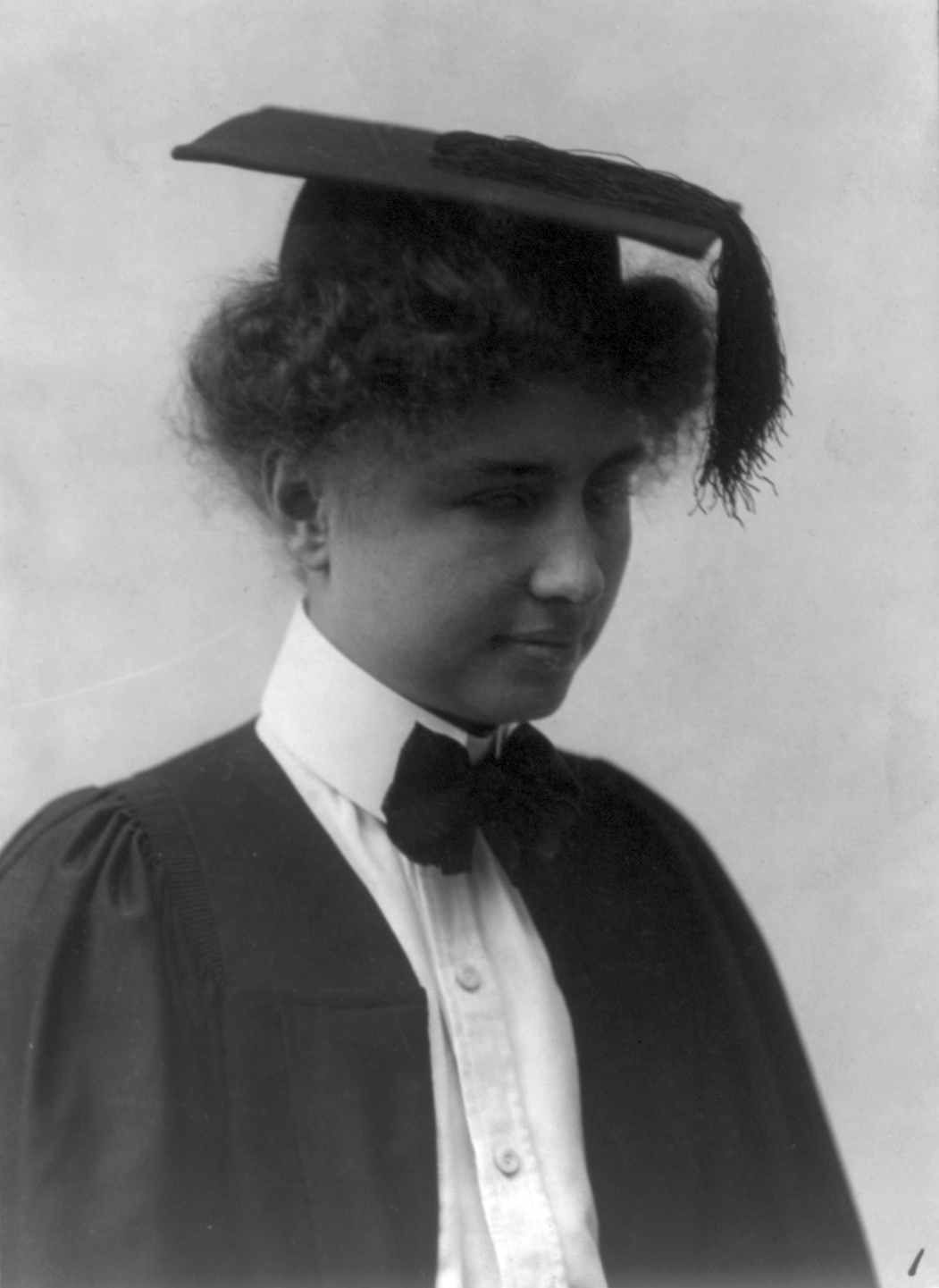
Watching the movie, viewers see live trees in the background and follow close-up shots of Annie, Helen, and her parents. Often, viewers are moved to tears by Helen’s discovery. When this scene is performed on stage (without the special effects of film), there is usually "not a dry eye in the house," or the theater. All the hours of teaching American Sign Language pay off when Helen learns the word water. This single word of dialogue is the turning point of the play and Helen Keller's life. Annie Sullivan was right about her student's intelligence. Helen Keller earned a degree from Radcliffe College and authored 13 books in her lifetime.
Images used in this section:
Source: File: Anne Bancroft Patty Duke Miracle Worker 1 1960.jpg, We hope, Wikimedia Commons
Source: Helen_Keller21.jpg, Calliopejen1, Wikimedia Commons
Left Is Right and Right Is Left
Another multiple meaning word used in drama is stage. In theater, the stage is the area where a play is acted out, or staged. In a proscenium, or traditional theater, the stage is raised.
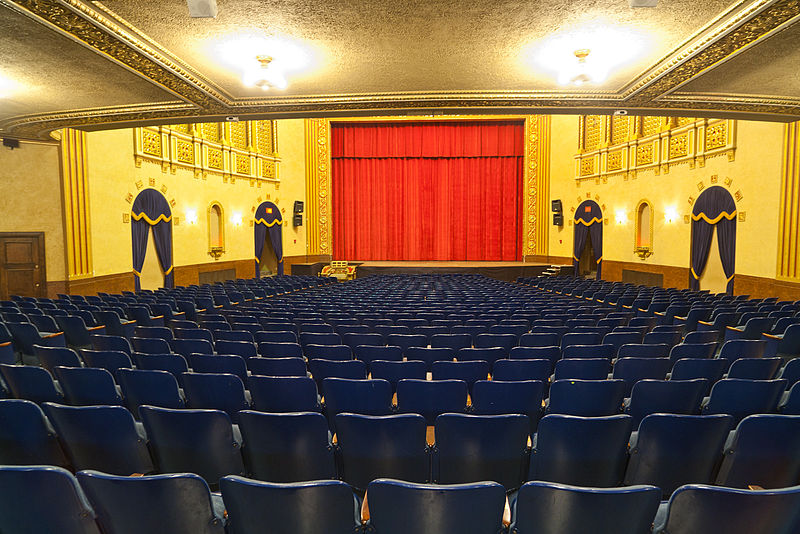
At one time, the stage was "raked," or sloped toward the audience; the back of the stage was higher than the front. In Shakespeare's time, some members of the audience stood to watch performances in a space directly in front of the stage.

The raked stage made it possible for those viewers to see what was happening in the back. Today, however, the audience sits on a "raked" floor, which slopes down toward the stage, so even the guy in the back row can see everything that happens onstage.
The stage floor has leveled off over time, but playwrights still use the original stage directions:
- Downstage, the part that sloped down, is the part of a stage that is closest to the audience.
- Upstage, the part that sloped up, is the part of the stage that is farthest from the audience.
Actors can go backstage to change costumes, but they should not try to upstage another actor. Upstaging is an attention-getting maneuver, similar to photobombing. Both tactics draw attention away from someone else and focus attention on you. When you photobomb, you draw attention away from the subjects of the photo and toward yourself. When you upstage someone, you position yourself behind (upstage from) a fellow actor and distract the audience’s attention, forcing the actor to turn around in order to look at you and block you from the audience. Watch this demonstration.
Whether you are in the audience or an actor on the stage, center stage is the same location, but that is not true for the left and right. The stage directions for left and right are given from an actor’s point of view.
- Stage right is the actor's right but the audience's left.
- Stage left is the actor's left but the audience's right.
When you read a play, you imagine that you are sitting in the audience as the play is performed. When you read the play’s stage directions, though, you have to switch right and left in your head. Read how William Gibson envisioned the set on the stage for The Miracle Worker.
"The playing space is divided into two areas by a more or less diagonal line, which runs from downstage right to upstage left."
Now that you understand stage directions, what would Gibson's diagonal line look like? Remember to think like an actor or actress on the stage, not an audience member. Hint: Switch right and left in your head!
Images used in this section:
Source: Source: Michigan Theater Seats, Michigan Theater Ann Arbor, jpg, Wikimedia Commons
Source: theatre-stage-crowd-people-91882, tpsdave, Pixabay
Break a Leg
According to theater superstition, it is bad luck to say “Good luck” to actors and musicians before a performance. Instead, it is customary to say “Break a leg” as an ironic way of telling performers that you hope the show goes well.
Stage directions, of course, don’t include instructions on breaking a leg. In addition to telling an actor where to stand—upstage, downstage, or center stage—stage directions include actions for the actors. When playwrights want actors to do something, they write stage directions, which are set apart from dialogue by parentheses, brackets, or italics. In the opening scene of The Miracle Worker, the script tells the actress playing Helen's mother what she should do:
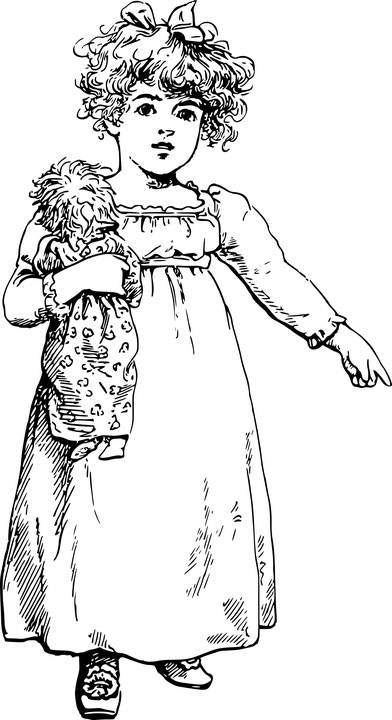
(She makes a pass with her hand in the crib, at the baby’s eyes.)
(She takes the lamp from him, moves it before the child’s face.)
The Miracle Worker provides more examples of what the actors should do on stage, particularly for Helen who cannot yet participate in the dialogue. In Act I, Scene 3, the Keller family, including Aunt Ev, are gathered in the main room of their home. Mrs. Keller wants to find an expert to help Helen learn language. The blank face on her doll is troubling Helen, and she acts very agitated. When she is unable to convey to her family that she wants eyes for her doll, she solves the problem herself. These stage directions tell you how.
[HELEN is back of AUNT EV, fingering her dress, and yanks two buttons from it.]
Aunt Ev: Helen! My buttons.
[HELEN pushes the buttons into the doll’s face. KATE now sees, comes swiftly to kneel, lifts HELEN’S hand to her own eyes in question.]
Kate: Eyes? (HELEN nods energetically.) She wants the doll to have eyes.
[Another kind of silence now, while KATE takes pins and buttons from the sewing basket and attaches them to the doll as eyes. KELLER stands, caught, and watches morosely. AUNT EV blinks, and conceals her emotion by inspecting her dress.]
By her actions, Helen demonstrates how frustrated she is because she cannot communicate. She shows her family and the audience that she can solve problems. While it is not socially acceptable to rip buttons off someone's dress, Helen's actions make it clear to the family that their smart daughter needs a teacher.
You've played your part as a student very well. As the lights fade on this lesson, you should take a bow. You have learned enough about drama to carry on an informed dialogue. Now you can exit stage left, or is it stage right?
Images used in this section:
Source: child-doll-girl-play-playing-1299225, OpenClipart-Vectors, Pixabay.com
Resources
Anderson, R. (2000). Elements of drama. Elements of literature: Third course. Austin, TX: Holt, Rinehart, and Winston.
Gibson, W. (1957). The miracle worker. New York, NY: Scribner.
Helen Keller - Water scene from The miracle worker. (26 March, 2010). [YouTube]. Retrieved from https://www.youtube.com/watch?v=lUV65sV8nu0
Theatre Development Fund. (21 January, 2015). Upstaging --TDF's theatre dictionary. [YouTube]. Retrieved from https://www.youtube.com/watch?v=9l2Zih4RKEU
Turner Benelux. (11 April, 2012). A dramatic surprise on a quiet square. [YouTube]. Retrieved from https://www.youtube.com/watch?v=316AzLYfAzw
Wilder, T. (1938). Our town. Retrieved from http://www.aasd.wednet.edu/cms/lib02/WA01001124/Centricity/Domain/74/Our_Town_full_text.pdf
